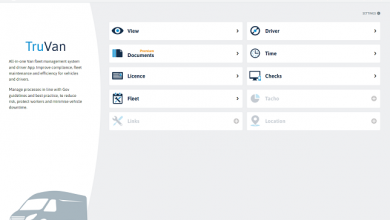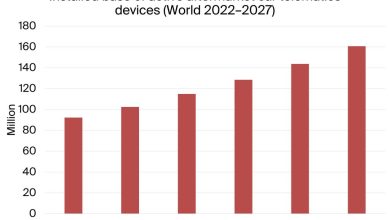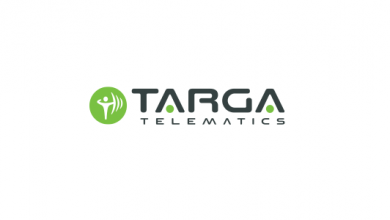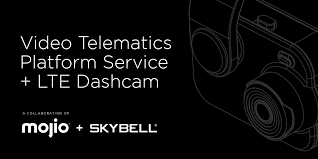In-vehicle infotainment market worth $31.4 billion by 2028 – Exclusive report by MarketsandMarkets

CHICAGO, July 6, 2023 /PRNewswire/ — In-vehicle Infotainment is projected to grow from USD 18.8 billion in 2023 to USD 31.4 billion by 2028, at a CAGR of 10.9% over the forecast period, according to a new report by MarketsandMarkets™. The growth of the in-vehicle infotainment market can be attributed to the rising demand for entertainment, safety & security, navigation services, and rear-seat entertainment. Additionally, factors such as government mandates for e-call services and electronic logging devices (ELD), growth in the smartphone industry, 5G infrastructure, and use of cloud technologies with artificial intelligence would create promising growth opportunities in the In-vehicle infotainment market.
In-vehicle Infotainment Market Scope:
| Report Coverage | Details |
| Market Size | USD 31.4 billion by 2028 |
| Growth Rate | 10.9% of CAGR |
| Largest Market | Asia Pacific |
| Market Dynamics | Drivers, Restraints, Opportunities & Challenges |
| Forecast Period | 2023-2028 |
| Forecast Units | Value (USD Billion) |
| Report Coverage | Revenue Forecast, Competitive Landscape, Growth Factors, and Trends |
| Segments Covered | By Vehicle Type, Component, Operating System, Services, Location, Connectivity, Form, Display Size, Retrofit, Vehicle Type, Electric Vehicle by Vehicle Type, and region. |
| Geographies Covered | Asia Pacific, North America, Europe, and the Rest of the World [RoW] |
| Report Highlights | Updated financial information / product portfolio of players |
| Key Market Opportunities | Government mandates telematics and e-call services |
| Key Market Drivers | Growth of the smartphone industry and use of cloud technologies |
“Embedded infotainments are estimated to account for the largest market in 2023.”
Embedded systems are estimated to be the largest in-vehicle infotainment systems during the forecast period in terms of value. Embedded infotainment systems were earlier available in premium cars owing to the high cost of these systems. However, the growth of the SUV segment and the adoption of these systems in mid-range passenger vehicles has increased the demand for embedded systems. Mid-range vehicle producers such as MG, Hyundai, Kia, and Honda actively add the latest features, such as embedded connectivity, HUD, and ADAS, in their vehicle models. In Europe, regulatory mandates are the prime factor that drives the embedded system market growth. Starting on March 31, 2018, it became mandatory to be installed EU-wide 112 emergency assistance in all newly manufactured passenger car models. This system connects the vehicle to emergency services following a collision and provides location and impact information to the nearest emergency response center.
Similarly, the embedded form type is prevalent in North American countries such as US and Canada, while the integrated form type is growing in popularity in Asia Pacific and RoW. The embedded system offers trust of OEM fitment with quality and enablement of various safety and entertainment services at different prices. Hence, rising consumer demand for connectivity and entertainment and improving connectivity elements would drive the market growth of embedded infotainment systems.
Android Automotive to register the fastest growth of all in-vehicle infotainment operating systems
Android is speculated to grow fastest during the forecast period. The adoption of Android OS is an open-source platform gaining traction due to its cost advantages, higher flexibility while developing programs, and increasing availability of services with a large user base worldwide. This platform offers a cost-effective solution compared to other systems, making implementing it more affordable. The development and commercialization of Android Automotive OS have attracted the attention of numerous automotive suppliers and original equipment manufacturers (OEMs). For example, prominent automakers such as General Motors and Stellantis have made significant announcements regarding adopting Google’s new Android operating system for powering infotainment systems across their entire vehicle lineup by the end of 2023. Also, Ford and Lincoln cars will switch to the same platform in two years, while others, including some Dodge models and the Lucid Air, use an Android-based system without Google Automotive Services. Collaborations between companies like Audi and Volvo with Google have resulted in the utilization of upgraded versions of infotainment systems. This widespread adoption indicates the growing prominence of Android OS and positions it as a key operating system for in-vehicle infotainment companies in the upcoming years.
Asia Pacific is estimated to be the dominant regional market.
Asia Pacific is projected to lead the global market for the in-vehicle infotainment industry by 2028. The dominance is mainly due to the presence of countries with higher vehicle production in different segments. For instance, developing countries such as China, India, and Thailand produce most of the economy and mid-range cars; thereby showcasing a substantial deployment of affordable infotainment systems with some advanced features. On the other hand, Japan, China, and South Korea have higher adoption of medium to premium range vehicles which finds installation of more sophisticated infotainment technology that includes in-built navigation, voice command, high-resolution display, and other premium features. Further, this region’s countries have significantly improved internet infrastructure, spurring the demand for infotainment systems among the tech-savvy population to provide a more connected driving experience. Key manufacturers are focusing on entering strategic partnerships with market players for market expansion, R&D, and product advancement to keep up with the changing needs of passengers. For example, in 2023, Sibrose and Marelli Holdings Co., Ltd. announced their collaboration to provide advanced over-the-air solutions to the next-generation vehicle’s cockpit. This partnership aimed to enhance the functionality of the vehicle’s cockpit by leveraging Sibros’ advanced over-the-air software update and data management platform and Marelli’s expertise in automotive technology.
Similarly, in 2022, Luxoft and Hyundai MOBIS announced a collaboration to develop the next-generation in-vehicle infotainment (IVI) platform for future mobility. The partnership aims to provide drivers and passengers with advanced digital experiences by incorporating cutting-edge technologies such as artificial intelligence and augmented reality. Luxoft will be responsible for the design and engineering of the software platform, whereas Hyundai MOBIS will provide the hardware and system integration expertise. The partnership is expected to result in a comprehensive and sophisticated IVI system that offers seamless connectivity and personalized services to enhance the driving experience. These collaborations and developments, coupled with changing consumer preferences, indicate that the region has huge growth potential in the in-vehicle infotainment market during the forecast period.
Key Market Players:
The in-vehicle Infotainment companies are Harman International (US), Panasonic Corporation (Japan), Alps Alpine Co Ltd (Japan), Robert Bosch Gmbh (Germany), and Continental AG (Germany). These companies adopted several strategies to gain traction in this market.
Recent Developments:
- In March 2023, Alps Alpine Co. Ltd. allied with FreeBit (Japan) to develop a Web 3.0 business model. This alliance is expected to boost Alps Alpine Co Ltd.’s automotive infotainment system business by supporting new architectures.
- In January 2022, Alps Alpine Co Ltd entered a joint venture with Qualcomm Technologies, which is expected to develop a digital cabin that uses High-Performance Reference Architecture (HPRA), Alps Alpine’s original integrated electronic control unit (ECU) powered by the 3rd Generation Snapdragon Cockpit Platforms. This is aimed at enabling advanced infotainment and cockpit capabilities in the vehicle.
- In January 2023, Garmin recently demonstrated its latest in-cabin solutions for the Automotive OEM at CES 2023. This system features four infotainment touchscreens, an instrument cluster, a cabin monitoring system, wireless headphones, wireless gaming controllers, smartphones, and various entertainment options. It is designed to be unified with a single SoC (system on chip).
- In November 2022, Pioneer supplied its display audio units and the premium audio systems to be factory-installed in Toyota’s Yaris ATIV sedan. The Pioneer Display Audio offers a nine-inch screen that is Apple CarPlay and Android Auto compatible and the Pioneer Premium Sound System includes six Pioneer-branded speakers. These options were offered in the vehicle’s premium luxury, premium, and smart segments.
- In February 2022, HARMAN International designed the MECWAVE to facilitate the deployment of vehicle-to-everything (V2X) communications through safety-critical applications such as hazard alerts, and increased connectivity experiences such as interactive infotainment and video streaming.





